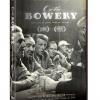Search the Community
Showing results for tags 'imax'.
-
Rocky Mountain Express - 70mm Imax Film Trailer | eBay Imax trailers seem to be in the $200-$400 range per trailer. Was reading about Perry's 70mm scanner he is building. I wondered what a trailer would cost in 70mm to run on it for development tests. I have a few 35mm trailers I bought, and they are not very expensive, generally speaking. Unless it is something rare. 35mm trailers can go as cheap as $1 + SH. Generally, they are $5 - $15. China breaks up IMAX trailers and sells each frame singly for $15 to $20 each!
-
Well let's start talking about it why not....Aspect ratio 1.43 : 1(Film IMAX - some scenes) 1.78 : 1(4K Blu-ray - some scenes) 1.90 : 1(Digital IMAX - some scenes) 2.20 : 1(70mm and Digital) 2.39 : 1(35mm) Camera IMAX MKIII, Panavision Sphero 65 and Hasselblad Lenses IMAX MKIV, Panavision Sphero 65 and Hasselblad Lenses IMAX MSM 9802, Panavision Sphero 65 and Hasselblad Lenses Panavision Panaflex System 65 Studio, Panavision System 65 Lenses Negative Format 65 mm(also horizontal, Kodak) Cinematographic Process IMAX Panavision Super 70 Printed Film Format 35 mm 70 mm(also horizontal, also IMAX DMR blow-up) D-Cinema
-
Hey, I know that the Arri lf sensor has a native 1.43:1 aspect ratio and that interested me a lot, but i know that the venice is not that much shorter at 1.5:1, so i want to know if there has been any project that has utilized the venice for 1.43:1 IMAX exhibition and if so, how it went.
-
Christopher Nolan is back, this time armed with an all-new 70mm lab in the UK. Nolan has decided to shoot his new movie "Dunkirk" entirely in 70mm. This decision comes at a cost obviously, in his previous films the decision to shoot 4 perf 35mm anamorphic was clearly one of cost savings, timing of the limited equipment availability and of course, speed of lab work. It's a lot harder to work on large format when there isn't a lab next door. Dunkirk is the story of the mass evacuation of troops, stuck in the little down of Dunkirk during the beginning of WWII, 1940 to be exact. History would make this incident, the largest sea rescue in history. Over 338 thousand soldiers from several countries, were pinned down in Dunkirk, cutoff from supply lines and worse of all, constantly being pushed closer and closer until they were literally trapped in the town of Dunkirk. That many people in such a small area, the Nazi's were eager to take them. Heck, had they been taken, perhaps the outcome of the war would have been quite different. The rescue started with British merchant ships, but soon there just wasn't enough ships or time. As the luftwaffe dropped bombs and attacked allied aircraft, the men boarded beached ships, many of which sunk right there on the beach. Local people and those from the UK came out with any type of boat imaginable in order to make the rescue more successful. Once the British troops were safe, there was another wave of ships sent back to pickup everyone else. Unfortunately between 30 and 40 thousand troops, the people on the front lines, were taken prisoner. The whole event took place from the middle of May 1941 to the first days of June. The actual story within the war framework, is yet to be known, but it's clear Nolan wanted to put the big air, land and sea battle on the big screen, using the largest film format possible. Nolan's Dunkirk will feature over 100 minutes of IMAX material, according to sources close to the production. So far almost all of the still and video images coming from set are of the IMAX camera, with only a few brief moments with the 5/70 Panavision cameras. So far the production has been shooting on location in France, close to where the actual rescue happened. They will then move to Holland for exteriors, UK for exteriors/interiors and finish in Los Angeles sometime a the end of the year for most likely studio work. The cast of Dunkirk includes; Tom Hardy, Mark Rylance, Kenneth Branagh, James D'Arcy and Cillian Murphy, one of Nolan's favorites. Dunkirk also re-unites the main crew that brought 'Interstellar' to life... Hoyte Van Hoytema heading up cinematography. Hans Zimmer writing the score. Lee Smith editing. Nathan Crowley production designer and of course, Emma Thomas Nolan's Producer. Since Nolan is such a purist and despises the over-use of computer effects, he is working very hard on Dunkirk to do everything in camera. This includes hiring hundreds of extras, blowing up air planes and sinking ships. So far the production has been littered with huge stunt sequences, most of them using models and/or sections of destroyed objects. The production does look a bit relaxed, without a video village and the normal rigs that go along with standard modern filmmaking. There are many stills of Nolan running the camera himself and Hoyte standing by on the side. It's reminiscent of a smaller budget production, only the content itself is a rather large scale. What we currently know about distribution of this movie is pretty vague at best. The teaser trailer, gives us some insight to Nolan's beliefs, stating the movie will be projected on 70mm, 35mm and IMAX film. These are of course, the same formats Nolan released 'Interstellar' in and looks to be doing the same thing again. This time around however, Nolan does have something up his sleeve, the fleet of almost 100 70mm projectors installed for 'Hateful Eight'. Could Warner strike a deal with the Weinstein's and perhaps loan those projectors? Would they even attempt that? Only time will tell. Nolan does have enough clout to release the movie on film only, but I doubt that will happen as Warner has too much invested for something to go wrong. So that's what we know so far, it's pretty interesting stuff for me, being a HUGE WWII fan and of course, loving the whole film aspect and Nolan's prior works. So in the next year, there will be more updates as time goes on, mostly due to my excitement. On a side note, rumors say PT Anderson is prepping his next movie, currently untitled... but starring Daniel Day-Lewis and to be shot entirely on large format. Due to Anderson's obsession with VistaVision, I have no doubt he'd go that route if the panavision 70mm cameras are too busy for him. So we MAY "fingers crossed" see, TWO NEW 70mm releases in 2017, only time will tell!
- 123 replies
-
Hey guys. Brand new to the forum and i joined specifically because i'm trying to find an answer to this question. Film usually runs vertically threw a camera but a few formats have it run horizontally to achieve a much larger negative. IMAX does this with 65mm and VistaVision does it with 35mm. Is there a 16mm equivalent?
- 13 replies
-
- Film
- horizontal
-
(and 6 more)
Tagged with:
-
I've been hunting around to see if there are any manuals available for the IMAX cameras such as the MSM 9820 or the MK II LW / MK III Reflex - I've tried numerous places including IMAX's own site but not coming up with anything. Does anyone have these in a format they could share, or have a link to somewhere on-line to view them? Thanks.
-
Christopher Nolan Continues Long Association with Facility for Unprecedented Film-to-Multiplatform Release Model BURBANK, CA (November 24, 2014) - Celebrated director Christopher Nolan returned to FotoKem to craft unique 35mm and 65mm film finishing pipelines for his epic sci-fi adventure Interstellar. Having completed numerous projects at FotoKem over the years - including the 35mm blowup and re-mastering of Following, the original lab work and re-mastering of Memento, and the home theater release of Inception and The Dark Knight - Nolan's collaboration with the facility deepened on Interstellar to involve negative processing through film, digital and video finishing, and distribution. "My experience of working with FotoKem dates back to 1999, and I'm happy to say in 2014 their photochemical post-production and film handling work is better than ever," Nolan said. Nolan and cinematographer Hoyte van Hoytema, FSF, NSC worked closely with artists and technicians at FotoKem to fine tune lab and digital processes to ensure that every scene, take and visual effect during production and post was reproduced accurately in all distribution formats. FotoKem's involvement on the project started with 65mm negative processing, progressed to include 35mm VFX negative processing, and 35mm and 65mm negative cutting with acclaimed negative cutter Mo Henry working in a special room at FotoKem designed for the process. Other work included 35mm and 70mm answer prints, intermediates, domestic release prints, digital cinema mastering and home video transfers. A unique optical format conversion to extract both 35mm and 65mm/5p widescreen images from 65mm/15p source negative was designed and utilized in over one hour of the movie's content. Seasoned film timer Mato worked closely with Nolan and Hoytema to fine tune scene-by-scene color, working with intercut original and intermediate elements to build the final film masters, with meticulous attention on color and mood for each scene. Mato teamed up with DI colorist Walter Volpatto and color scientist Joseph Slomka to ensure an exact match with the approved film print masters for the multiple digital deliverables. The unique release structure of Interstellar allows audiences to experience the film on 70mm IMAX print, 70mm 5-perf print, 35mm print, IMAX Digital, 4K DCP and 2K DCP, with the IMAX 70mm print version being the highest resolution and most immersive of the available exhibition options. FotoKem will also provide digital deliverables for home theatrical presentation, with Kostas Theodosiou supervising the color pass, his sixth time mastering a Nolan film for home release. For more information about FotoKem, visit www.fotokem.com.
-
I saw this rather intriguing post on REDUSER.net and I thought someone who posts here more regularly might have heard similar murmurings. http://www.reduser.n...531#post1123531 I've added a screencap for posterity.
- 6 replies
-
- panavision
- imax
-
(and 3 more)
Tagged with:







